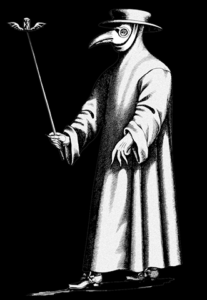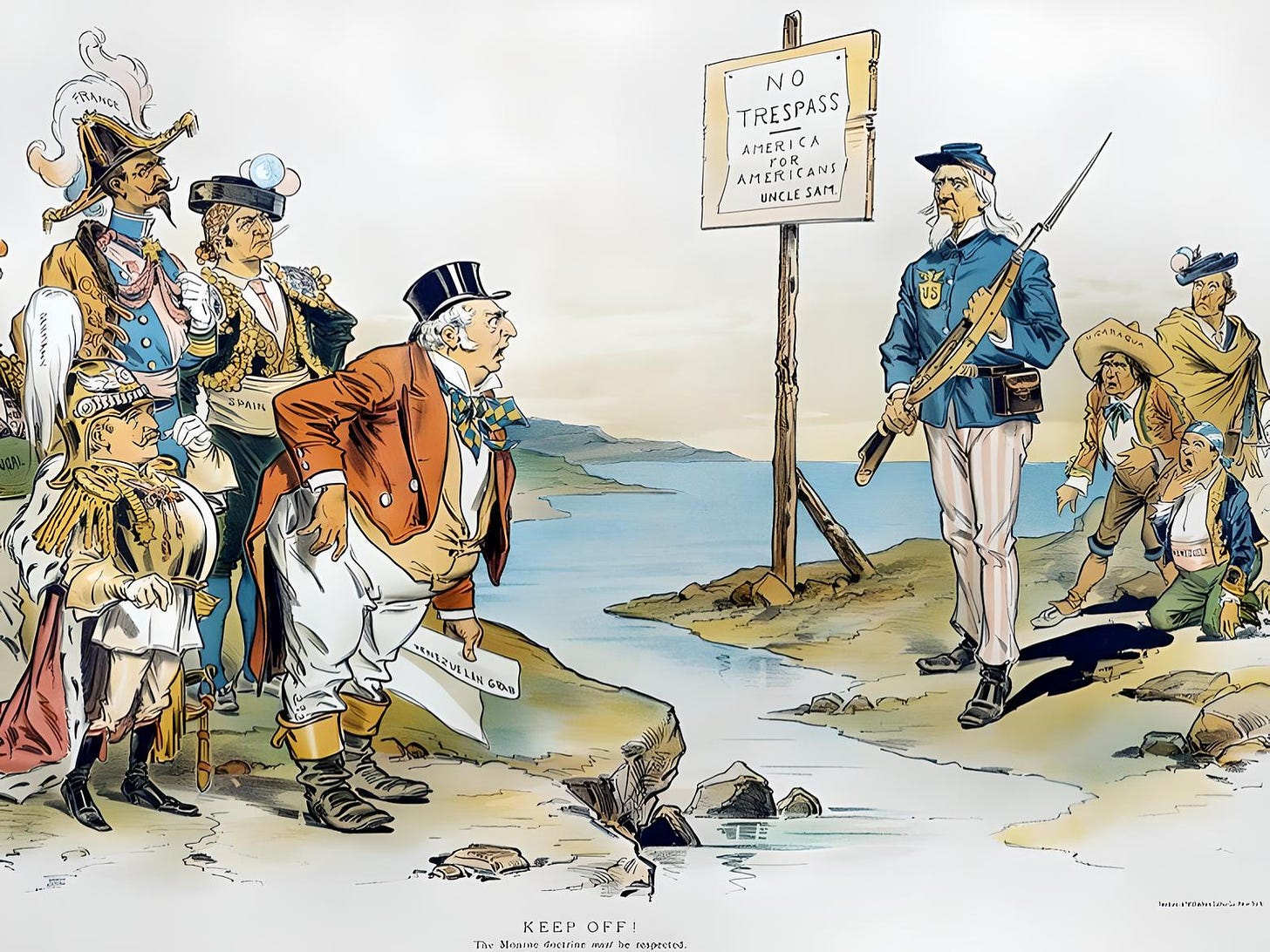The Anti-Black Plague: “Black Death” of 1347-1351 Kills Half of Europe . . . Black Women Most Affected
Even the fleas in medieval London hated black women.
That’s the only conclusion I could draw from a series of headlines this week implying that no one suffered more from the bubonic plague that ravaged London in the mid-1300s than black women.
This came as quite the wake-up call to me, seeing as how in my repulsively bigoted ignorance I was unaware there were any black women in Western Europe back then.
Audio version: To listen in a player, use the one below or click here. To download the mp3, right-click here and choose “save link as” or “save target as.”
Many of the headlines unequivocally stated this as established fact. Here are two identical headlines that go way beyond the “pale” and not only state that black women were more statistically likely to die from the “Black Death” — they were its primary victims:
Tech News: Black Women Were Primary Victims of Black Death in Medieval London
Ancient Origins: Black Women Were Primary Victims of Black Death in Medieval London
Holy moly, sounds like it sucked to be a black woman in medieval London!
Taking it down a notch from “primary victim” status, the following headlines imply that black women suffered a higher statistical likelihood of dying from der schwarze Tod than all other groups in London:
The Voice: Black women of African descent more likely to die of medieval plague
The Guardian: Women with Black African ancestry ‘at greater risk when plague hit London’
Okay, but why? Don’t be a dummy — the answer was RACISM:
The Telegraph: ‘Racism in medieval England’ may have led to black people dying of bubonic plague
And in something called “ianVisits”: Unearthing Inequality: Black Women were more likely to die during London’s great plagues
Where in the holy name of Aunt Jemima are they getting this information? According to the BBC — which in this case stands for British Broadcasting Corporation rather than Big Black Cock — the Museum of London has the scoop:
Black women most likely to die in medieval plague, Museum of London says
The BBC article mentions a “study” on which this odd conclusion is based . . .
The study is the first archaeological exploration showing how race may have influenced a person’s risk of death during what was known as the Great Pestilence or Great Mortality. . . .
Data on bone and dental changes of the 145 individuals from East Smithfield emergency plague cemetery, St Mary Graces and St Mary Spital formed the basis of the study. . . .
The report said: “There is a significantly higher proportion of people of estimated African affiliation in the plague burials compared to the nonplague burials (18.4% vs. 8.3%).”
. . . but the BBC doesn’t mention the study’s name, nor where a curious soul such as myself might find the study.
The estimated death toll in London from the 1348-1350 outbreak of bubonic plague was 30,000-35,000, so I’m going to brazenly speak truth to power here and suggest that a sample size of 145 — only 40 of whom were determined to have died from the plague — is statistically iffy.
Being the diligent, truth-seeking gumshoe that I am, I had to pore over all the other aforementioned headlines to conclude that the “study” in question was written by a Dr. Rebecca Redfern, Dr. Joseph Hefner, Dr. Dorothy Kim, and Professor Sharon DeWitte.
Still, none of the articles listed the study’s title, nor where I might be able to take a gander at it myself. Several of the articles say it was already published by Bioarchaelogy International, but according to the University of Florida Press, which publishes that periodical, its most recent issue was from the Summer of 2023 and makes no mention of black women dropping dead from Da Plague in London during the mid-1300s.

You can buy Jim Goad’s ANSWER Me! here.
Only one of the articles about this shockingly invisible new study, dated from this past Tuesday, said it was “to be published,” which makes me suspect that it hasn’t even been released yet.
I contacted the University of Florida Press by both e-mail and voicemail about how I might be able to take a gander at this study. I also contacted one of the study’s co-authors, Joseph Hefner. No one responded. It appears that either the alleged publisher or the study’s authors issued some sort of press release, then a credulous media gobbled it up and puked it back out to the public.
The most pressing question is, “How in the heck did they determine these 700-year-old corpses were black?” According to The Telegraph:
It is understood the Museum of London will not conduct any DNA testing into the plague burial remains.
Okay, so no DNA testing. Innnnnnteresting. The Guardian says [emphasis added]:
The results reveal nine plague victims appeared to be of African heritage, while 40 seemed to have white European or Asian ancestry. Among the non-plague burials, the figures were eight and 88 respectively.
At least there are some numbers tucked in there. So what they seem to be saying is that a higher quotient of plague victims appeared to be of African heritage — which could mean “Egyptian” rather than “Bantu,” for all I can tell — than those who didn’t die from the plague. And what kind of half-assed conclusions are they drawing from this?
Based on a patchwork collage of quotes attributed to the study’s authors, this is all evidence that:
Intersectionality — the compounded harm of race and gender and misogynoir — may have impacted mortality during medieval pandemic disease.
Not only does this research add to our knowledge about the biosocial factors that affected risks of mortality during medieval plague epidemics, it also shows that there is a deep history of social marginalization shaping health and vulnerability to disease in human populations.
[The plague] is portrayed as being an indiscriminate killer, but we actually know it wasn’t.
Apparently, “misogynoir” is a portmanteau coined to describe hatred of black women, yet it makes me hate whatever nincompoop came up with it.
These results also, according to the authors of this unnamed study that has either yet to be published or that no one is willing to link to, demonstrate “structural racism’s devastating effects” and the “health outcomes of structural and anti-black racism.”
But what’s to say that the “non-plague deaths,” from which purported blacks suffered lower alleged instances of reputed victimhood, weren’t the result of being beaten to death, burned at the stake, or ritually disemboweled? These were violent times, were they not? If one had an agenda, as the authors seem to have, one could make a case from the same results that black people escaped some of the era’s harsher, human-inflicted punishments compared to white indigenous Londoners.
Not that there’s anything weird about it, but study co-author Rebecca Redfern has been writing about corpses from fourteenth-century London cemeteries for quite some time. In two previous studies which I was actually able to find, she alleges that the reputed non-white corpses show absolutely no sign of maltreatment relative to the purportedly white corpses.
From 2019:
The study failed to identify any health disparities or differences in funerary treatment.
From 2021:
When we looked at how the skeletons were buried at East Smithfield, we found that none of the plague victims with Black [sic] African or mixed heritage had been maltreated as you might expect to see in a population group that might have suffered from discrimination. We could see that their bodies were placed in the graves with care and respect, as can be seen in the image.
So she’d previously gone out of her way to note that these allegedly black corpses had been treated with care and respect, yet suddenly her vadge-flaps are howling about structural anti-black racism.
What a dingbat.
The plague outbreak of the mid-1300s reportedly appeared in North Africa before it made its way to England. If one were so inclined, one could easily blame North Africans — who are not the same as sub-Saharans — for trying to commit genocide against the English.
It’s also widely thought that the plague pandemic of the mid-1300s was first introduced to Europe in 1346 as part of a deliberate biological-warfare attack by Asian soldiers in the Golden Horde who catapulted plague-infected corpses over the walls into the Crimean city of Kaffa. If you’re looking for “structural racism,” there it is.
At least the fleas of medieval Europe can proudly claim that no one ever called them “nigger.”
* * *
ATTENTION: As part of Counter-Currents’ end-of-year fundraising drive, I will be offering my services as a nonpareil karaoke artist. For the ridiculously low price of $100, you can get me to humiliate myself by singing a song of your choice live and on camera. Keep an eye on the home page over the next couple days for more details.





